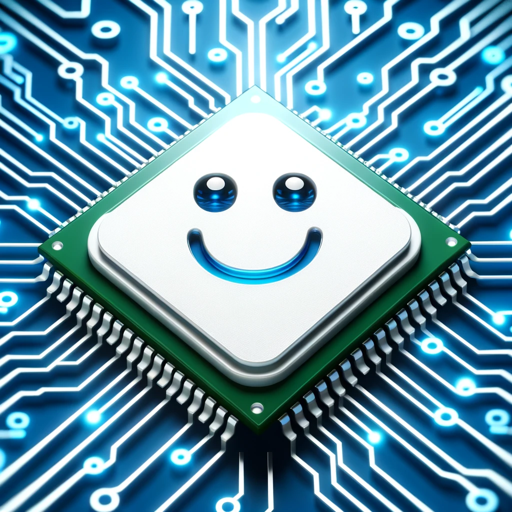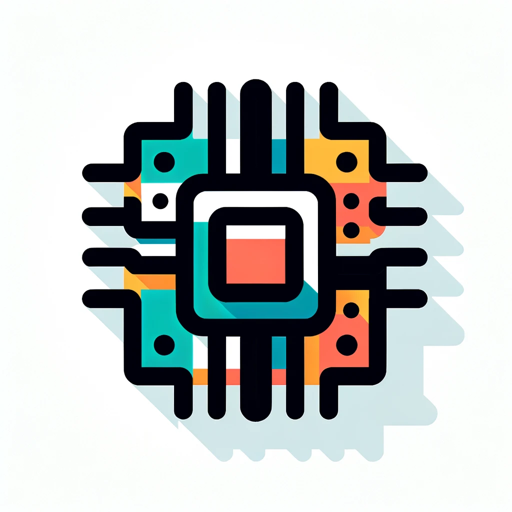Computer Architecture-AI-powered computer architecture tool
AI-Powered Computer Architecture Learning
Please explain the first concept from my exam review.
Can you expand on the second topic in my review?
How does the third concept apply in MIPS assembly language?
Could you illustrate the fourth topic using Logic Circuit software examples?
Related Tools
Load More
Assembly Language Expert
Guidance on Assembly Language programming, including coding, translation, and debugging.

Electronics Hardware Design GPT
Expert in electronics and hardware design, circuit and PCB guidance

Digital Logic Design Tutor
Tutor for Digital Logic Design, offering detailed explanations and online research.

EE-GPT
A search engine and troubleshooter for electrical engineers to promote an open-source community. Submit your questions, corrections and feedback to [email protected]

Computer Systems
Expert in computer systems, focusing on hardware and components.

Computer Architecture and Organization Tutor
Expert tutor in Computer Architecture and Organization
20.0 / 5 (200 votes)
Introduction to Computer Architecture
Computer Architecture refers to the conceptual design and fundamental operational structure of a computer system. It focuses on the way a computer's hardware components interact and the principles guiding their integration to execute complex tasks efficiently. The primary goal is to optimize performance, ensure compatibility, and balance cost against performance. For instance, consider a scenario where a computer needs to perform a high-volume data analysis; the architecture determines how quickly and efficiently the processor can handle this task, balancing speed, memory usage, and energy consumption.

Main Functions of Computer Architecture
Instruction Set Architecture (ISA)
Example
Defines the set of instructions a computer can execute, including how instructions are represented and executed.
Scenario
When a developer writes code in assembly language for a MIPS processor, they use the MIPS ISA to ensure the code can be correctly interpreted by the processor.
Microarchitecture
Example
Describes how a particular processor will implement the ISA, including data paths, control signals, and pipelines.
Scenario
In designing a new CPU, engineers decide on the number of stages in the pipeline to improve instruction throughput while managing heat dissipation and power usage.
Memory Hierarchy
Example
Organizes storage solutions from fastest to slowest, such as registers, cache, RAM, and hard drives, to optimize access speed and efficiency.
Scenario
A computer running a video game uses fast cache memory to store frequently accessed textures and data, reducing lag and improving performance.
Ideal Users of Computer Architecture Services
Hardware Engineers
These professionals design and develop new computer hardware, requiring a deep understanding of computer architecture to create efficient and powerful components. By understanding architecture principles, they can optimize performance, power consumption, and cost.
System Programmers
These users write low-level code that interacts directly with hardware. Knowledge of computer architecture is crucial for optimizing code performance, managing resources effectively, and ensuring compatibility with various hardware components.

Guidelines for Using Computer Architecture
Step 1
Visit aichatonline.org for a free trial without login, also no need for ChatGPT Plus.
Step 2
Ensure you have a stable internet connection for seamless access and interaction with the tool.
Step 3
Familiarize yourself with the interface and available features by exploring the tool's tutorials and help sections.
Step 4
Input your specific questions or topics related to computer architecture for detailed, customized responses.
Step 5
Utilize the tool's advanced functionalities like MARS MIPS assembly code examples and Logic Circuit references to enhance your understanding and application.
Try other advanced and practical GPTs
Budget GURU
AI-Powered Financial Guidance for All

Cheap Flight Tickets
AI-Powered Flight Deals Finder

Flight Bot
AI-powered flight search and booking tool.

Add Text To Image
Add Text To Images with AI Precision

BUILDING CONSTRUCTION AND ENGINEERING DRAWINGS
AI-Powered Construction Drawing Guide

Construction Project Manager
Streamline Construction Projects with AI-Powered Management

Computer Scientist
AI-Powered Tool for Computer Science
Computer Graphics Tutor
AI-powered Computer Graphics Guidance

Theoretical Computer Science Expert
AI-powered solutions for theoretical computer science

One Pager
AI-Powered One-Page Document Creation

One-Pager Generator
AI-Powered Tool for Effective One-Pagers

Cryptic Clue Creator
Generate cryptic clues with AI precision

- Optimization
- Debugging
- Learning
- Design
- Simulation
Computer Architecture Q&A
What is computer architecture?
Computer architecture refers to the design and organization of a computer's core components, including its hardware, software, and system structures, to achieve optimal performance and efficiency.
How can I improve my understanding of MIPS assembly language using this tool?
The tool provides detailed explanations and examples of MIPS assembly language, including syntax, operations, and practical coding exercises using the MARS simulator, helping you to better grasp the concepts.
What are common use cases for learning computer architecture?
Common use cases include academic learning for students, preparing for technical interviews, enhancing programming skills, understanding hardware-software interaction, and optimizing system performance.
Can this tool help with learning about Logic Circuits?
Yes, the tool offers references and explanations on Logic Circuits, including digital design principles, circuit diagrams, and simulation tips to help you understand and build various logic circuits.
What prerequisites are needed to start using this tool?
Basic knowledge of programming concepts and a general understanding of computer systems are helpful, but the tool is designed to assist learners at all levels, providing step-by-step guidance and explanations.